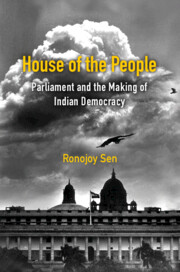Book contents
- Frontmatter
- Dedication
- Contents
- List of Illustrations
- Acknowledgements
- Introduction
- 1 The Road to Parliamentary Democracy: The Constituent Assembly and Its Prehistory
- 2 Protean Institution: The Changing Composition of Parliament
- 3 ‘Please Take Your Seat!’ Disruptions in Parliament
- 4 Inside Out: The Parliamentary Committee System
- 5 Corruption, Criminality and Immunity
- Conclusion
- Index
1 - The Road to Parliamentary Democracy: The Constituent Assembly and Its Prehistory
Published online by Cambridge University Press: 11 October 2022
- Frontmatter
- Dedication
- Contents
- List of Illustrations
- Acknowledgements
- Introduction
- 1 The Road to Parliamentary Democracy: The Constituent Assembly and Its Prehistory
- 2 Protean Institution: The Changing Composition of Parliament
- 3 ‘Please Take Your Seat!’ Disruptions in Parliament
- 4 Inside Out: The Parliamentary Committee System
- 5 Corruption, Criminality and Immunity
- Conclusion
- Index
Summary
Whatever system of government we may establish here must fit with the temper of our people and be acceptable to them.
– Jawaharlal Nehru, Constituent AssemblyThe only new things, if there is any, in a Constitution framed so late in the day are the variations made to remove the faults and to accommodate it to the needs of the country.
– B. R. Ambedkar, Constituent AssemblyUnlike the fifty-five delegates who attended the Constitutional Convention in Philadelphia in 1787 and are revered as the ‘founding fathers’ of the United States of America or the members of the storied Constituent Assembly in the wake of the French Revolution, the architects of India's Constitution are largely forgotten. Only the many statues of Bhim Rao Ambedkar – often referred to as the ‘father of the Indian Constitution’ – with the Constitution in one hand that dot cities and towns across India serve as a reminder of the founding document of Indian democracy. Although Ambedkar, chairman of the drafting committee in the Constituent Assembly, is most remembered for piloting the Indian Constitution, he was one among twenty or so members who were most influential in shaping the Constitution.
The Constituent Assembly itself was created from members elected under the 1935 Government of India Act, which was the last of a series of constitutional experiments that began in 1861, partly triggered by the 1857 uprising. Though there were some, including a few members of the Constituent Assembly, who had spoken about the ancient origins of Indian democracy and the need to look beyond Western and British models, arguably ‘constitutionalism in India, as in other parts of Asia and Africa, is a modern project, whose origins can be traced to much more recent times’. There has long been an intense debate on the British contribution to Indian democratic institutions and the Indian Constitution. There are several scholars who have observed, in Christopher Bayly's words, that ‘Indian democracy was neither an inheritance from India's past nor a gift of British rule’. More recently, Madhav Khosla has argued in regard to the Indian Constitution that it should be seen as a ‘repudiation’ of the colonial legacy and not as part of a process of ‘evolution’.
- Type
- Chapter
- Information
- House of the PeopleParliament and the Making of Indian Democracy, pp. 13 - 63Publisher: Cambridge University PressPrint publication year: 2023

